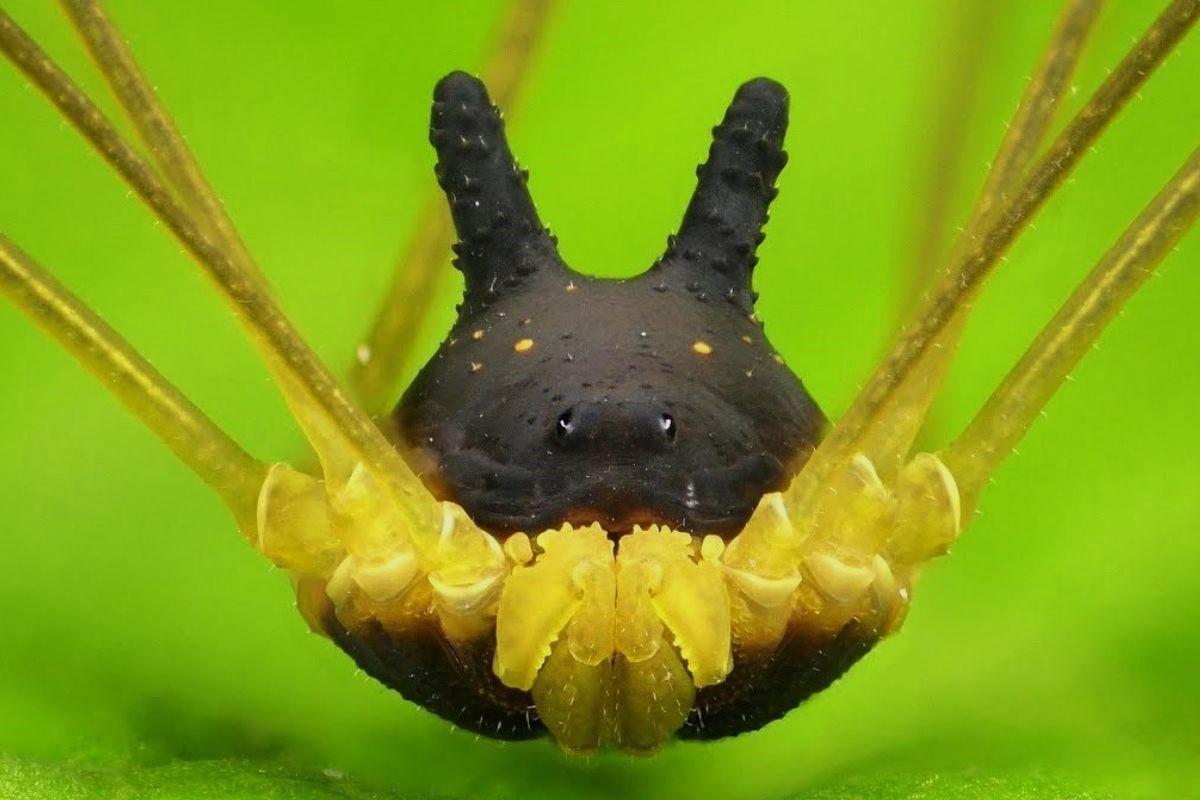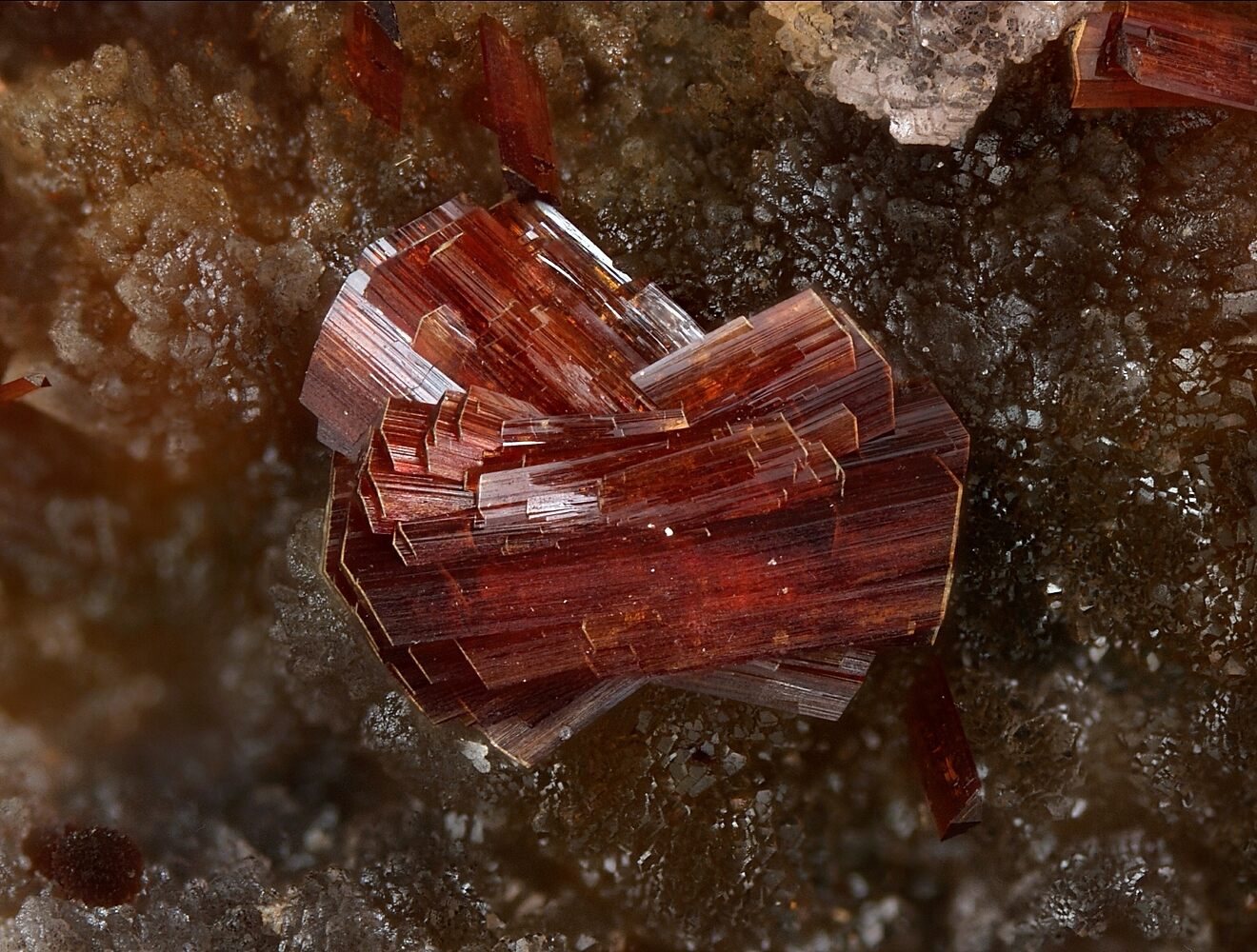
What makes the Bunny Harvestman Spider so unique? This tiny arachnid, often mistaken for a spider, is actually a type of harvestman. Known for its bunny-like appearance, it sports long legs and a body that resembles a rabbit's face. Found primarily in South America, this creature has captivated scientists and nature enthusiasts alike. Unlike true spiders, Bunny Harvestmen lack venom and silk glands, making them harmless to humans. Their peculiar look and gentle nature have earned them a special place in the world of arachnids. Ready to learn more? Let's dive into 34 fascinating facts about this extraordinary creature!
Key Takeaways:
- The Bunny Harvestman Spider, despite its bunny-like appearance, is not a true spider but belongs to the order Opiliones. It plays a vital role in the ecosystem by helping to decompose organic matter.
- This fascinating arachnid has unique sensory organs on its head, communicates through leg taps, and has a solitary nature. It is harmless to humans and relies on camouflage and autotomy for defense.
What is the Bunny Harvestman Spider?
The Bunny Harvestman Spider, also known as Metagryne bicolumnata, is a fascinating arachnid. Despite its name, it isn't a true spider but belongs to the order Opiliones. This creature is known for its unique appearance, which resembles a bunny.
-
The Bunny Harvestman Spider is not a true spider. It belongs to the order Opiliones, also known as harvestmen.
-
Its name comes from its appearance, which resembles a bunny due to its long, ear-like appendages.
-
Unlike true spiders, it has a single, fused body segment rather than two distinct segments.
-
These creatures are found in the tropical rainforests of South America, particularly in Ecuador.
Physical Characteristics
The Bunny Harvestman Spider has some unique physical traits that set it apart from other arachnids. Let's explore these fascinating features.
-
It has long, slender legs that can be up to five times the length of its body.
-
The body is small, usually around 5-7 millimeters in length.
-
Its most distinctive feature is the pair of long, ear-like structures on its head, which give it a bunny-like appearance.
-
These "ears" are actually sensory organs called pedipalps, used for feeling and manipulating objects.
-
The body color is typically a mix of brown and black, providing camouflage in its natural habitat.
Behavior and Diet
Understanding the behavior and diet of the Bunny Harvestman Spider can give us insights into its role in the ecosystem.
-
It is primarily nocturnal, becoming active at night to hunt for food.
-
Unlike true spiders, it does not spin webs to catch prey.
-
Its diet consists mainly of small insects, plant material, and fungi.
-
It uses its long legs to feel around and locate food in the dark.
-
The Bunny Harvestman Spider is known to be a scavenger, often feeding on dead or decaying organic matter.
Reproduction and Lifespan
Reproduction and lifespan are crucial aspects of any species' biology. Here's what we know about the Bunny Harvestman Spider.
-
Mating involves a complex courtship ritual where the male uses his pedipalps to transfer sperm to the female.
-
Females lay eggs in moist soil or leaf litter, where they are protected from predators.
-
The eggs hatch into tiny, miniature versions of the adults, known as nymphs.
-
Nymphs undergo several molts before reaching adulthood.
-
The average lifespan of a Bunny Harvestman Spider is about one year.
Defense Mechanisms
Every creature has its ways of defending itself from predators. The Bunny Harvestman Spider is no exception.
-
It relies on camouflage to blend into its surroundings and avoid detection.
-
When threatened, it can release a foul-smelling chemical to deter predators.
-
Its long legs can be used to quickly escape from danger.
-
If a leg is grabbed by a predator, it can detach the leg to escape, a process known as autotomy.
-
The detached leg continues to twitch, distracting the predator and allowing the spider to flee.
Interesting Facts
Here are some additional interesting facts about the Bunny Harvestman Spider that you might find intriguing.
-
Despite its fearsome appearance, it is harmless to humans and does not bite.
-
It plays a crucial role in the ecosystem by helping to decompose organic matter.
-
The Bunny Harvestman Spider has been the subject of various scientific studies due to its unique morphology.
-
It is often mistaken for a spider, but its lack of venom glands and silk-spinning abilities set it apart.
-
The sensory organs on its head are highly sensitive, allowing it to detect minute vibrations in the environment.
-
It communicates with other harvestmen through a series of leg taps and body vibrations.
-
The Bunny Harvestman Spider is a solitary creature, rarely interacting with others except during mating season.
-
It has a unique way of cleaning itself, using its legs to groom its body and remove debris.
-
The species is not considered endangered, but habitat destruction poses a potential threat to its population.
-
The Bunny Harvestman Spider has inspired various works of art and literature due to its distinctive appearance.
Fascinating World of Bunny Harvestman Spiders
Bunny Harvestman Spiders, with their unique appearance and intriguing behaviors, have captivated many. Their bunny-like ears, actually sensory organs, help them navigate their environment. Found mainly in South America, these arachnids prefer humid, dark places like caves and forests. Despite their somewhat creepy look, they pose no threat to humans. Their diet consists mainly of small insects and plant matter, making them beneficial for controlling pest populations.
Their fascinating mating rituals and social behaviors add another layer of interest. Males often engage in elaborate dances to attract females. These spiders also communicate through vibrations and chemical signals, showcasing their complex social interactions.
Understanding these creatures helps us appreciate the diversity of life on Earth. Next time you encounter a Bunny Harvestman Spider, take a moment to observe its unique features and behaviors. You might just find yourself fascinated by these tiny, yet remarkable, creatures.
Frequently Asked Questions
Was this page helpful?
Our commitment to delivering trustworthy and engaging content is at the heart of what we do. Each fact on our site is contributed by real users like you, bringing a wealth of diverse insights and information. To ensure the highest standards of accuracy and reliability, our dedicated editors meticulously review each submission. This process guarantees that the facts we share are not only fascinating but also credible. Trust in our commitment to quality and authenticity as you explore and learn with us.


